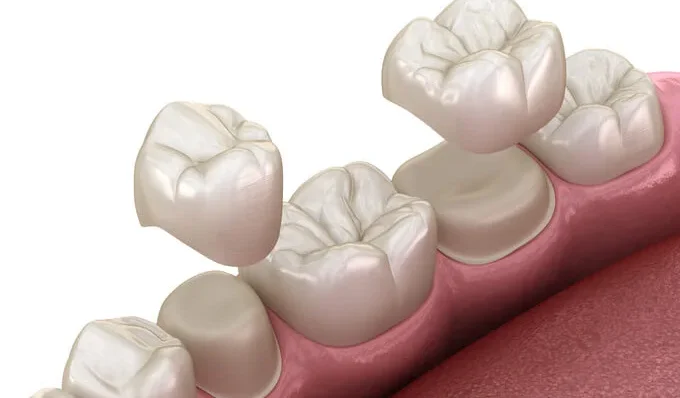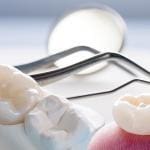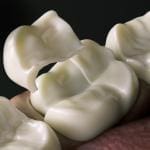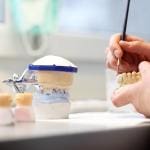Dental crowns are meticulously crafted restorations designed to restore the function and aesthetics of damaged or decayed teeth. However, even with careful preparation and fitting, adjustments may sometimes be necessary to ensure a perfect fit and optimal comfort. In this article, we’ll explore the process of crown adjustment, why it may be needed, and what patients can expect during this essential step in their dental treatment journey.
Why Crown Adjustment May Be Necessary
Despite the precision involved in fabricating and placing dental crowns, there are several reasons why adjustments may be required:
- Occlusal Interference
- Marginal Fit
- Aesthetic Concerns
- Functional Issues
Occlusal Interference
Sometimes, the crown may interfere with the patient’s bite, causing discomfort or difficulty chewing. This can occur if the crown is slightly too high or if the alignment is off.
Marginal Fit
The margin of the crown, where it meets the gumline, must fit snugly against the tooth to prevent food debris and bacteria from accumulating. If there are gaps or irregularities in the margin, adjustments may be necessary to ensure a proper seal.
Aesthetic Concerns
Patients may have specific aesthetic preferences regarding the shape, size, or color of their crowns. Adjustments can be made to address these concerns and achieve the desired cosmetic outcome.
Functional Issues
In some cases, patients may experience discomfort or sensitivity due to a poorly fitting crown. Adjustments can help alleviate these symptoms and restore normal function.
The Crown Adjustment Process
The crown adjustment process typically involves the following steps:
- Assessment
- Occlusal Adjustment
- Margin Refinement
- Aesthetic Refinements
- Bite Evaluation
- Final Polishing
- Final Approval
- Patient Education
Assessment
Before making any adjustments, the dentist carefully evaluates the crown to identify areas that require attention. This may involve checking the fit, bite, and aesthetics of the crown to determine the nature of the adjustment needed.
Occlusal Adjustment
If the crown is causing occlusal interference, the dentist may use a dental drill to carefully adjust the biting surface of the crown. This involves removing small amounts of material to ensure that the crown fits harmoniously with the patient’s natural bite pattern.
Margin Refinement
If there are any irregularities in the crown margin, the dentist may need to refine it to achieve a proper seal against the tooth. This may involve smoothing rough edges or adjusting the shape of the margin to improve its fit and integrity.
Aesthetic Refinements
If the patient has specific aesthetic concerns, such as the shade or shape of the crown, adjustments can be made to address these preferences. This may involve adding or removing material to achieve the desired cosmetic outcome.
Bite Evaluation
After making the necessary adjustments, the dentist performs a bite evaluation to ensure that the patient’s occlusion is properly balanced and comfortable. This involves checking the patient’s bite and making any additional adjustments as needed to achieve optimal alignment.
Final Polishing
Once the adjustments are complete, the crown is polished to a smooth finish to enhance its aesthetics and ensure a comfortable fit. This helps prevent plaque buildup and maintain the longevity of the restoration.
Final Approval
Once both the dentist and the patient are satisfied with the fit and appearance of the crown, final approval is obtained before proceeding with the crown cementation process. This ensures that the patient is fully satisfied with the outcome and that any concerns or preferences have been addressed
Patient Education
Throughout the adjustment process, the dentist educates the patient on proper oral hygiene practices and post-adjustment care instructions. This empowers the patient to maintain their oral health and maximize the lifespan of their dental crown.
Laser Dentistry and Crown Adjustment
Laser technology has found numerous applications in dentistry, including crown fitting. Lasers can be used for various purposes during the crown fitting process, such as:
- Soft Tissue Contouring
- Disinfection
- Preparation
Soft Tissue Contouring
Prior to crown placement, lasers can be used to reshape and contour the gum tissue around the tooth, ensuring a harmonious gum line and optimal esthetics.
Disinfection
Lasers have antimicrobial properties and can be used to disinfect the tooth surface and surrounding tissues, reducing the risk of post-operative infections.
Preparation
In some cases, lasers can be used for tooth preparation instead of traditional drilling techniques. Laser preparation is minimally invasive and can preserve more healthy tooth structure.
Conclusion
Crown adjustment is a vital step in the dental restoration process, ensuring that patients receive a crown that fits seamlessly, functions properly, and enhances their smile. By addressing issues such as occlusal interference, margin fit, and aesthetic concerns, dentists can achieve optimal outcomes and provide patients with long-lasting, comfortable restorations. If you experience any discomfort or have concerns about your dental crown, don’t hesitate to consult your dentist for evaluation and possible adjustment. Your smile deserves nothing less than perfection.





